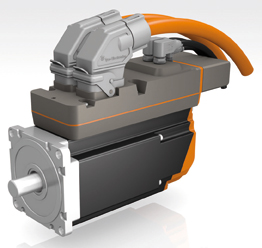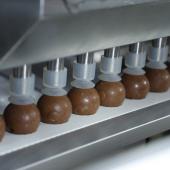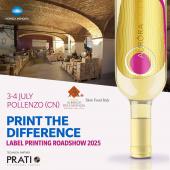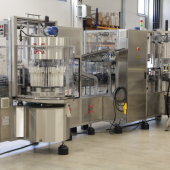The open network that makes the difference
Various heterogeneous automation technologies can be network linked to create integrated and coordinated solutions. This is demonstrated by the experience of the Ethernet POWERLINK Standardization Group (EPSG), whose automation “philosophy” has been embraced by automation producers of international standing, including B&R, and by many machine builders.
Between September and November the encounters involving the Ethernet POWERLINK Standardization Group touched several European countries. In Italy, B&R - leading light for over thirty years in the production of control, visualization, motion and safety solutions for the automation of machines and systems - had the honour and the task of directing the encounters held in Milan and Bologna, that entailed coordinating some of the other EPSG members, these being ASCO Numatics (subsidiary of Emerson, manufacturer of valves, electrovalves and pneumatic components), Stäubli (robot manufacturer) and Cognex (supplier of visual inspection systems).
All personally committed to promoting the benefits of applying this communication standard, and aided by the direct experience of machine builders, the partners were able to show how automation devices can be accurately controlled, with extremely fast reaction times and simply implemented thanks to the speed, bandwidth and the flexibility of the POWERLINK network (characteristics these substantially derived from the adoption of the Ethernet protocol).
An effective dialogue - A single system, a single software, one single control ... Meaning, a single network (Ethernet, of course) all along the line, to manage synchronous motion, diagnostics and safety. And all this at contained costs, while affording higher productivity and a simplification of the system architecture. These are in brief the benefits of the integrated automation achieved by POWERLINK, defined by the EPSG Technology Marketing Manager Stephane Potier as "all inclusive": a sort of "positive wave" sweeping across various industrial and manufacturing levels, relating them to each other in real time and simplifying the dialogue between the components.
From words to deeds: technological glass
Emblematic in this regard, the experience reported by a major machine builder invited to the Milan encounter in the light of its having adopted POWERLINK.
With a rapid survey of the figures of Bottero SpA, Fabio Galliano (head of Automation Systems R&D of the Hollow Glass Business Unit) aboveall clarified the value and mission of the company. Bottero SpA indeed plays a major role in the world of glass: with an export share of 90%, the company is the only reality in the world able to provide machines and lines for working monolithic and laminated flat glass, systems for producing glass containers as well as complete lines for the production of float glass plates.
In particular the Bottero Hollow Glass Unit, entirely dedicated to the design and development of machinery for the manufacture of bottles and glass containers, as of 1966 has been operating on the market and today is a manufacturer of world renown, operating in more than seventy countries*.
It designs and builds highly complex lines for drop “cut-and-deliver” glass conditioning, and the subsequent forming of glass containers.
Their systems are obviously complete ware handling systems, providing in-line control of each processing step (a user-friendly interface between operator and control system stores the line configuration data and enables the monitoring of the correct functioning of the same). Everything is controlled by servo mechanisms, now deemed indispensable in optimising the production process in terms of repetitivity, container handling, energy saving and, last but not least, safety.
Galliano focused attention on the recent re-engineering of the control systems, named 700 series E-packs, that thanks to the adoption of POWERLINK, provide superior performance compared to the previous version: advanced automation techniques, quick and efficient data exchange, modularity and flexibility, advanced diagnostics, a new human/machine interface while now being a lot smaller in size.
Obviously essential for the good performance of the project, according to the head of the Automation, the transition from synchronous digital (I/O) to the POWERLINK network, hence meaning simpler wiring, easier diagnostics, a lesser and more reliable number of electrical connections. Lastly, the closer integration between systems and the creation of a standard high performance platform opens many possibilities for developing new solutions.
New dimensions in decentralized
drive architecture
With the recent ACOPOSmulti65m devices with IP65 protection, B&R extends and completes its line of drives: from its variable frequency drive to its multiaxial servodrive and decentralized drive solutions. In this case, the combination of the drive with the motor creates servoactuators capable of providing power directly where it is needed. The configurable modules thus become mechatronic units that are simple to connect up, not only saving of precious space in the power panel, but also lowering logistics and commissioning costs.
The new system combines the motor, position sensor (encoder), precision gear and servodrive in a highly compact unit. Thanks to the simple electrical connection, ACOPOSmulti65m concretizes the concept of modular machine, enabling the engineering of optimized production strategies.
The device integrates seamlessly with the entire series of B&R ACOPOS drives. As a result, all the tools and features available in Automation Studio as well as applications created in the same programming environment can be used. Concerning the topology, the new servo actuator can be used either in a linear or shaft structure. The network connection is via POWERLINK.
 With the new ACOPOSmulti65mservo actuator with integrated motor, B&R offers a decentralized motion control with SS1 safety functions according to SIL3 or PLe.
With the new ACOPOSmulti65mservo actuator with integrated motor, B&R offers a decentralized motion control with SS1 safety functions according to SIL3 or PLe.
 Note which highlights the innovative strength of the Bottero Hollow Glass Unit, that has 50 patents to its credit, developed over the last ten years. Among the most important innovations we highlight the first electronic variable weight feeder, the first proportional forming system and the first top mounted mould opening and closing system …).
Note which highlights the innovative strength of the Bottero Hollow Glass Unit, that has 50 patents to its credit, developed over the last ten years. Among the most important innovations we highlight the first electronic variable weight feeder, the first proportional forming system and the first top mounted mould opening and closing system …).




















